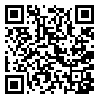BibTeX | RIS | EndNote | Medlars | ProCite | Reference Manager | RefWorks
Send citation to:
URL: http://tumj.tums.ac.ir/article-1-41-en.html
Background: Extremely low frequency (0-300 Hz) fields from power lines, electronic equipment and medical devices, have been reported to produce various biological effects. Global system for mobile (GSM) is most largely used in everybody's life. This system utilizes a low frequency band as well as a high frequency range of electromagnetic field. This study investigated the effects of 217 Hz electromagnetic field (the modulating signal in GSM) on spatial learning and memory in rat.
Methods: Twenty four male Wistar rat (200- 250 g) were randomly divided in to three groups as: test, sham and control. Using a Helmholtz coil system, the test group was exposed to a uniform pulsed EMF of 200 µT (micro Tesla) intensity for 4 h/day for 21 days (2 time in a day). This procedure was repeated for the sham group but with no field. All groups were trained prior to the day 21 on the 15th day for five days four trial per day in Morris Water-Maze system. Then the probe test was carried out for 60 seconds with no platform.
Results: The ANOVA test revealed that no significant differences were found between control and exposed rats in all day of learning acquisition. Also, in probe test for investigating the memory, no significant differences observed. (P≤0.05 is accepted for significant level.
Conclusion: This finding is in consistent with previous studies and indicates low frequency band of electromagnetic fields (EMF) (200 µT intensity) in cell phone may not have any effect on the learning acquisition and spatial memory in rat.
| Rights and permissions | |
 |
This work is licensed under a Creative Commons Attribution-NonCommercial 4.0 International License. |





